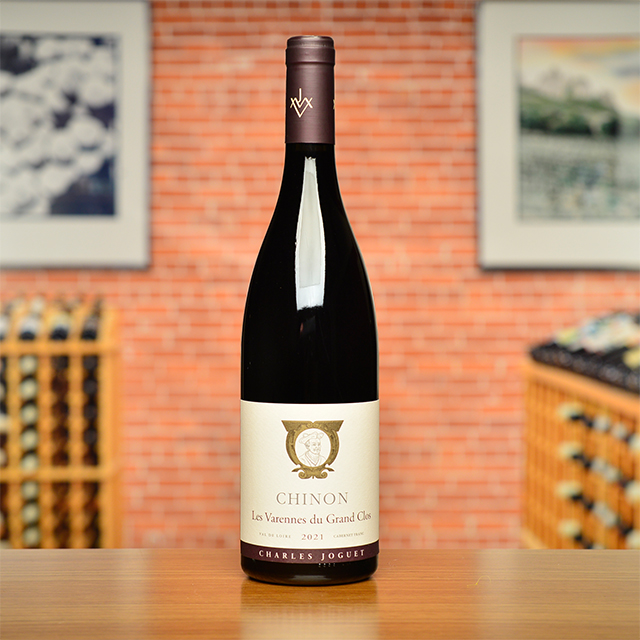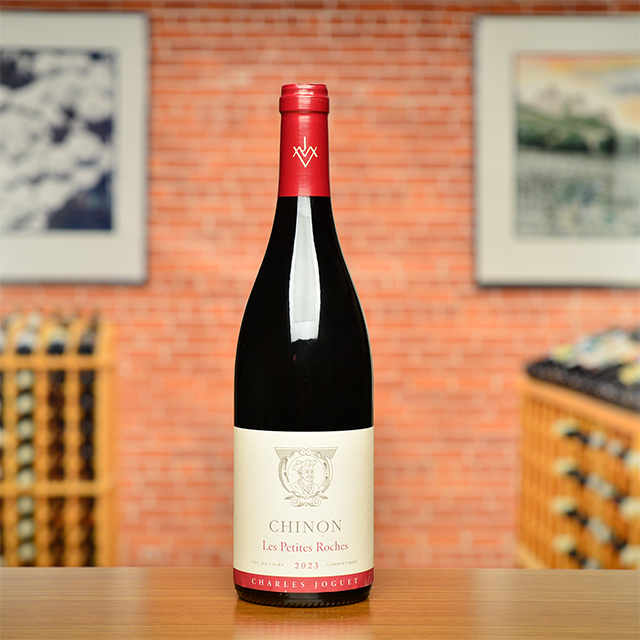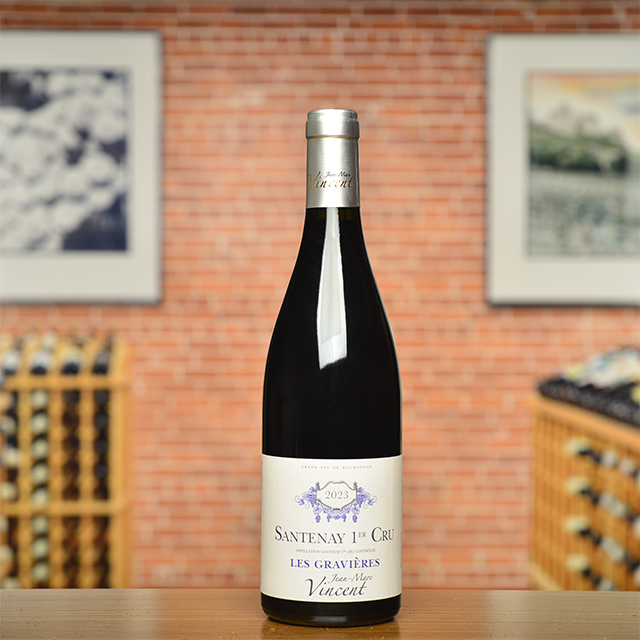Notify me
2016 Chinon “Les Petites Roches”
Charles Joguet
With notes of flowers, red berries, and damp earth, this is a classic representation of Cabernet Franc from Chinon.
When Charles Joguet took over the family vineyards in 1957, he set out to do something that was unheard of in the Loire Valley. Rather than blending all the fruit from his varied parcels, he opted for a more Burgundian approach and began vinifying each individually, highlighting Chinon’s diversity of soils and exposures and playing with the nuances of vine age to propose a gamut of different wines of unique character. It is in this spirit that the domaine’s current vigneron, Kevin Fontaine, crafts the cuvée Les Petites Roches, named for the estate’s gravelly terroirs. Given light treatment in the cellar, this wine shows off Cabernet in its most delicate, charming form, rife with aromas of roses, damp earth, and little red berries, along with a gentle tannin holding it all together. This classic representation of Cabernet Franc from Chinon can be enjoyed over the next five or so years with roast chicken, pork chops, or game.
—Anthony Lynch
| Wine Type: | red |
| Vintage: | 2016 |
| Bottle Size: | 750mL |
| Blend: | Cabernet Franc |
| Appellation: | Chinon |
| Country: | France |
| Region: | Loire |
| Producer: | Charles Joguet |
| Vineyard: | Planted in 1930 to 1940, 2.22 ha |
| Soil: | White Limestone, Clay |
| Aging: | Prolonged aging in 1-3 year-old barrels for 12-15 months |
| Farming: | Organic (certified) |
| Alcohol: | 13.5% |
More from this Producer or Region

2024 Vouvray “La Dilettante”
France | Loire
Delicate, precise, and succulent at the same time, this beautiful blanc will pair well with fresh seafood and light summer salads and pastas.

2022 Chinon “Cuvée Terroir”
France | Loire
The perfect combination of tart red fruit, herbaceousness, and graphite earthiness.

2016 Chinon “Les Varennes du Grand Clos” MAGNUM
France | Loire
Joguet’s Varennes du Grand Clos has fine-grained tannins that seem to melt into the richness of a marbled steak in an almost magical way.

2021 Chinon “Les Varennes du Grand Clos”
France | Loire
With floral aromas and fine-grained tannins, it already showcases its charms.

2020 Chinon “Les Varennes du Grand Clos”
France | Loire
With floral aromas and fine-grained tannins, it already showcases its charms.

2021 Chinon “Clos de la Dioterie”
France | Loire
Age-worthy red from one of Chinon’s top sites, by a storied domaine.

2020 Chinon “Clos du Chêne Vert”
France | Loire
Chinons from Joguet are known for their firm minerality, but this one is quite charming as well, with plummy black fruit, myrtle, and notes of warm licorice.

2023 Savennières
France | Loire
Savennières is home to some of the greatest terroirs for this grape variety thanks to its soils of schist, sandstone, and blue slate and its proximity to the moderating Loire River.

2022 Saumur-Champigny “Les Mémoires”
France | Loire
Sourced from 110+ year-old vines, this is hands-down one of the best Cab Francs being made in the Loire Valley today.

2023 Chinon “Les Petites Roches”
France | Loire
Showing off Cabernet in its most delicate, charming form, rife with aromas of roses, damp earth, and little red berries.
About The Producer
Charles Joguet
About The Region
Loire

The defining feature of the Loire Valley, not surprisingly, is the Loire River. As the longest river in France, spanning more than 600 miles, this river connects seemingly disparate wine regions. Why else would Sancerre, with its Kimmeridgian limestone terroir be connected to Muscadet, an appellation that is 250 miles away?
Secondary in relevance to the historical, climatic, environmental, and cultural importance of the river are the wines and châteaux of the Jardin de la France. The kings and nobility of France built many hundreds of châteaux in the Loire but wine preceded the arrival of the noblesse and has since out-lived them as well.
Diversity abounds in the Loire. The aforementioned Kimmeridgian limestone of Sancerre is also found in Chablis. Chinon, Bourgueil, and Saumur boast the presence of tuffeau, a type of limestone unique to the Loire that has a yellowish tinge and a chalky texture. Savennières has schist, while Muscadet has volcanic, granite, and serpentinite based soils. In addition to geologic diversity, many, grape varieties are grown there too: Cabernet Franc, Chenin Blanc, Sauvignon Blanc, and Melon de Bourgogne are most prevalent, but (to name a few) Pinot Gris, Grolleau, Pinot Noir, Pineau d’Aunis, and Folle Blanche are also planted. These myriad of viticultural influences leads to the high quality production of every type of wine: red, white, rosé, sparkling, and dessert.
Like the Rhône and Provence, some of Kermit’s first imports came from the Loire, most notably the wines of Charles Joguet and Château d’Epiré—two producers who are featured in Kermit’s book Adventures on the Wine Route and with whom we still work today.
More from Loire or France
2016 Jasnières “Chant de Vigne”
Christine de Mianville France | Loire
2021 Saumur Blanc “Terres”
Thierry Germain France | Loire
2023 Sancerre “Les Cris”
Daniel Chotard France | Loire
2021 Chinon “Clos de la Dioterie”
Charles Joguet France | Loire
Vouvray Brut
Champalou France | Loire
2024 Vouvray “La Dilettante”
Catherine & Pierre Breton France | Loire
2024 Chinon Rosé
Bernard Baudry France | Loire
2024 Reuilly “Les Pierres Plates”
Domaine de Reuilly France | Loire
2017 Jasnières “Chant de Vigne”
Christine de Mianville France | Loire
2024 Chinon “Les Granges”
Bernard Baudry France | Loire
2022 Muscadet Sèvre et Maine “Réserve”
Domaine Michel Brégeon France | Loire
2021 Vin de France Blanche
Domaine Michel Brégeon France | Loire
2016 Jasnières “Chant de Vigne”
Christine de Mianville France | Loire
2021 Saumur Blanc “Terres”
Thierry Germain France | Loire
2023 Sancerre “Les Cris”
Daniel Chotard France | Loire
2021 Chinon “Clos de la Dioterie”
Charles Joguet France | Loire
Vouvray Brut
Champalou France | Loire
2024 Vouvray “La Dilettante”
Catherine & Pierre Breton France | Loire
2024 Chinon Rosé
Bernard Baudry France | Loire
2024 Reuilly “Les Pierres Plates”
Domaine de Reuilly France | Loire
2017 Jasnières “Chant de Vigne”
Christine de Mianville France | Loire
2024 Chinon “Les Granges”
Bernard Baudry France | Loire
2022 Muscadet Sèvre et Maine “Réserve”
Domaine Michel Brégeon France | Loire
2021 Vin de France Blanche
Domaine Michel Brégeon France | Loire
Our Guarantee

Our Guarantee
We only import wine we drink and enjoy ourselves, directly from the source.
Our wine tastes the same in your home as it did where it was bottled in Europe.
Like the long-term relationships we build with growers, we build long-term relationships with our clients. Have a question? Need wine advice? Just give us a call—510-524-1524.

















